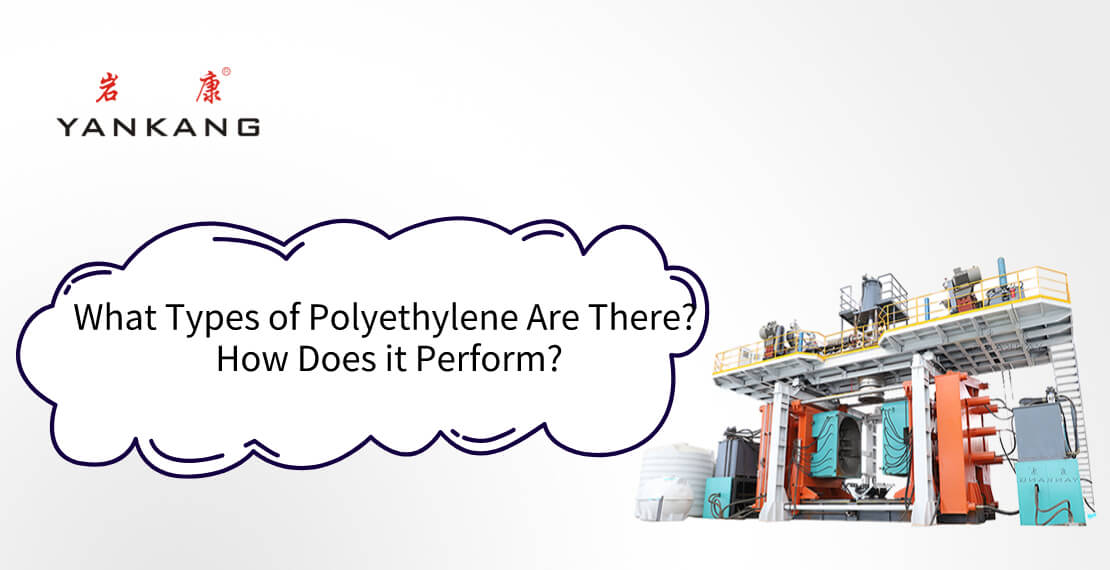(1) Types of polyethylene
There are many types of polyethylene, and there are many ways to classify them.
① According to the different polymerization pressure in the polymerization process, polyethylene is generally divided into high-pressure polyethylene, medium-pressure polyethylene, and low-pressure polyethylene.
② According to the different molecular weight of polyethylene, it can be divided into ordinary molecular weight polyethylene, high molecular weight polyethylene (HMWHDPE), ultra-high molecular weight polyethylene (UHMWPE), and low molecular weight polyethylene (LMWPE).
③ Also, metallocene polyethylene (mPE) can be prepared by using a metallocene catalyst in the polymerization process of polyethylene. Linear low-density polyethylene (LLDPE) can be obtained by copolymerizing polyethylene with a small amount of α-olefin.
The following is a brief introduction to various types of polyethylene.
①Low-density polyethylene (LDPE)
Low-density polyethylene (LDPE), also known as high-pressure polyethylene, is a polyethylene synthesized by the polymerization of ethylene under high pressure. Because the polyethylene produced by the high-pressure method has many molecular branches and low density (density is generally 0.910-0925g/cm³), it is called low-density polyethylene (LDPE).
②High-density polyethylene (HDPE)
High-density polyethylene (HDPE), also known as low-pressure polyethylene, is a polyethylene synthesized by the polymerization of ethylene under low pressure. The polyethylene produced by the low-pressure method has few molecular branches and high density (the density is generally 0.941-0.965cm³), so it is also called high-density polyethylene (HDPE).
③Linear low-density polyethylene (LLDPE)
The polyethylene copolymerized with a small amount of α-olefin is called linear low-density polyethylene (LLDPE). Its molecular branches have many short branches and almost no long branches.
④High-molecular-weight polyethylene (HMWHDPE)
High-molecular-weight polyethylene (HMWHDPE) generally refers to polyethylene with a molecular weight of 300,000-1 million, and a density of 0.944-0.954 cm³.
⑤For ordinary molecular weight polyethylene, the molecular weight is usually between 15,000 and 300,000. The molecular weight of LDPE is generally not more than 70,000, and the molecular weight of HDPE is generally not more than 300,000.
(2) The performance of polyethylene
Polyethylene (PE) is a hydrocarbon compound composed of long branched hydrocarbon chains. The intermolecular force of the polymer is small and it is a non-polar polymer.
①Physical performance
PE resin is usually milky white translucent waxy pellets, tasteless, odorless, non-toxic, and easy to burn. There is a waxy smell when burning, accompanied by melting and dripping.
②Mechanical properties
The molecular chain of PE is flexible, with low glass transition temperature (Tg), good flexibility, and impact resistance. However, the tensile strength is relatively low, the hardness is insufficient, and the creep resistance is poor. Under load, it will continuously deform and produce creep with time. And the creep increases with the increase of load, temperature increase, and density decrease.
The mechanical properties of different types of PE are affected by the degree of crystallinity and molecular weight. Generally, LDPE is flexible and impact-resistant; while HDPE has higher tensile strength, stiffness, and hardness. As the molecular weight increases, the tensile strength, impact strength, and environmental stress crack resistance increase.
③ Thermal performance
After PE is heated, as the temperature increases, the silent part gradually melts, and its melting point is related to the crystal size of PE
HDPE has high crystallinity and a high melting point, generally 125-137°C. LDPE has low crystallinity and low melting point, generally 105-120°C.
The Tg of PE is low, and PE products can maintain better toughness at a lower temperature (-50°C). However, the use temperature is not high, and the deformation temperature will be very low even under a small load. In general, the continuous use temperature of LDPE is below 60°C, and that of HDPE is below 80°C.
PE has a larger heat capacity and a larger coefficient of linear expansion.
④Chemical properties
The permeability of PE to oxygen, nitrogen, carbon dioxide, etc. is relatively high, but the permeability to water vapor is low and the permeability of PE decreases with the increase of density. The permeability of HDPE is much lower than that of LDPE.
PE products are not suitable for packaging items that need to maintain fragrance for a long time but are suitable for moisture-proof or packaging items that need to prevent moisture loss.
PE has excellent chemical stability. It can withstand acid, alkali, and salt aqueous solutions at room temperature, such as hydrochloric acid, hydrofluoric acid, phosphoric acid, formic acid, acetic acid, ammonia, sodium hydroxide, potassium hydroxide, and various salt solutions (including oxidizing potassium permanganate Solution and dichromate solution, etc.), even at higher concentrations, it has no significant effect on PE. However, concentrated sulfuric acid, concentrated nitric acid and other oxidants will slowly corrode PE. After the temperature rises, the oxidation effect becomes more significant.
PE has excellent solvent resistance and is insoluble in any solvent at room temperature, but solvents with similar solubility parameters can make it swell. As the temperature increases, PE crystals are gradually destroyed, and the role of macromolecules and solvents strengthens. After reaching a certain temperature, PE can be dissolved in aliphatic hydrocarbons, aromatic hydrocarbons, halogenated hydrocarbons, etc. For example, LDPE can be dissolved in benzene at 60℃, and HDPE can be dissolved in benzene at 80℃-90℃. Both are soluble in toluene, trichloroethylene, tetrahydronaphthalene, decalin, petroleum ether, mineral oil, and paraffin at temperatures above 100°C. However, PE is still insoluble in water, aliphatic alcohols, acetone, ether, glycerin, and vegetable oils even at higher temperatures.
PE is prone to age under the action of the atmosphere, sunlight and oxygen, elongation and cold resistance are reduced, mechanical properties and electrical properties are reduced, and gradually become brittle, cracks, and eventually lose performance. The main reason is that there is a small amount of double bond structure in the PE molecular chain, and the branching produces unstable tertiary hydrogen atoms and residual impurities during polymerization, which make it easy to age.
⑤Electrical performance
PE has excellent electrical properties, high volume resistivity, small dielectric constant and dielectric loss tangent, and is hardly affected by frequency, so it is suitable for preparing high-frequency electrical insulating materials.

